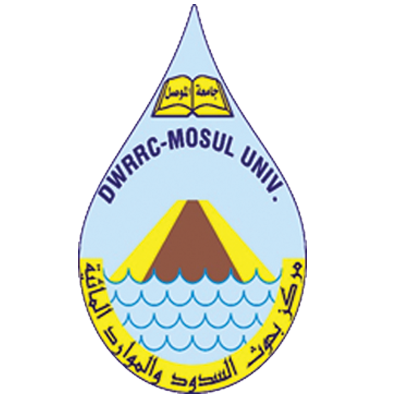Hydraulic laboratory
Hydraulics Laboratory
Laboratory Description:
The Hydraulics Laboratory is located in the center building, which has an area of 290 square meters. Inside, it contains several rooms: one for the laboratory supervisor (responsible for overseeing experiments in the lab, monitoring the operation of pumps and gates, ensuring the functionality of the pipe and tank system, and preparing necessary materials and arrangements for conducting experiments within the lab), another for the center’s instructors who conduct experiments in the lab, a third room used as a storage area for tools and equipment required for the work, and another room dedicated to the electronic computer used by researchers to perform experiment-related calculations, record data, and obtain results. The lab also includes rooms with aluminum partitions above the previously mentioned rooms, and it has an annex with bathrooms, sanitary facilities, and sinks. Inside the lab, there are three laboratory channels designated for conducting experiments and tests related to water resources and hydraulics. The dimensions of these channels are:
1. Concrete Channel: 10 meters in length and 75 centimeters in width, equipped with a calming basin at the channel’s entrance and a metal gate at both ends. Water is pumped into this channel from an underground storage tank or a metal tank mounted 3 meters high within the lab.
2. Iron Channel with Transparent Glass Sides:* 10 meters in length and 50 centimeters in width, equipped with a calming basin at the entrance and a special lifting device to change the channel’s floor slope as required by the researcher. A point gage is installed at the top to measure levels and depths during experiments.
3. Iron Channel with Transparent Glass Sides:* 8 meters in length and 40 centimeters in width, equipped with a calming basin at the entrance and independent metal tanks for water storage and pumping into the channel with a special pump. It also features a lifting device to change the channel’s floor slope according to the experiment type. Point gages are installed on the top sides to measure levels and depths during experiments.
Additionally, the laboratory includes a model basin with dimensions of 9 meters in length and 3 meters in width for conducting hydraulic models, experiments related to dams, hydraulic structures, and erosion and sedimentation processes in rivers and lakes. It is equipped with a calming basin at the entrance and a metal gate at the end of the basin.
There is an open concrete channel that takes water from the end of the laboratory’s concrete channel and the model basin, directing it to a closed concrete channel that transports the water to the underground tank at the end of the laboratory for recirculating the water back to the experiment areas.
Laboratory Equipment:
1. Large Pump: 100 liters/second capacity, located near the underground tank, pumping water through a network of pipes to the experiment areas (either to the 10-meter concrete or iron channels or to the model basin).
2. Smaller Pump: Used to continue experiments in case of a malfunction in the main pump until it is repaired and maintained.
There are two walkways, one 80 centimeters wide and the other 100 centimeters wide, designated for researchers’ movement during experiments and taking measurements in the channels or the model basin. The lab is also equipped with two movable ladders for easy transportation and shifting of devices and materials within the lab.
Laboratory Tasks:
The tasks of the laboratory include conducting experiments and tests related to water resources and hydraulics, such as:
– Designing and implementing hydraulic models and conducting experiments either in the model basin or glass channels.
– Conducting experiments related to spillways and their associated aspects.
– Conducting experiments on erosion and sedimentation processes in rivers and lakes.
– Conducting experiments on the nature of water flow in open channels.
– Measuring flow velocities in open channels using modern devices.
– Using field devices in the laboratory to collect samples from work sites and conduct various measurements and site analyses in rivers and lakes, such as taking and analyzing bottom and suspended samples and measuring flow velocities in rivers and channels and taking river cross-sections using modern Echo-sounder devices.
Laboratory Devices:
The laboratory contains modern and advanced laboratory devices used by the center’s researchers to conduct the necessary tests and measurements to complete the center’s research plan:
1. Davis 7716 Meteorological Station
2. Skye Meteorological Station
3. Current Flow Meters
4. Aquadopp 3D Current Meter
5. Water Velocity Meter in the Channels
6. Water Quality Meter
7. Grap Sampling Device for Bottom Sediment Samples
8. River Depth Measuring Device
9. Horizontal Water Sampling Device
10. Core Sampling Device for Bottom Materials
11. Rainfall Meter
12. Evaporation Meter
13. Water Level Logger
14. Water Table Measuring Device
15. GPS Device
Laboratory Safety Precautions:
1. Firefighting Supplies (Portable Extinguishers)
2. Safety Supplies (Warning Signs for Switching Off Electrical and Cooling Devices Upon Departure)
3. Equipment Supplies (Instructional Signs for Using Laboratory Devices)
4. Air Exhaust Supplies (Warning Signs for Operating Air Exhaust Devices)

